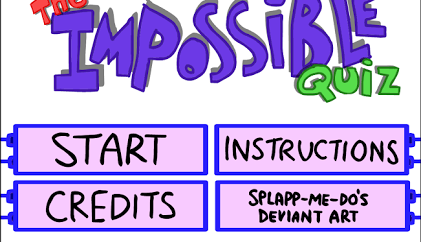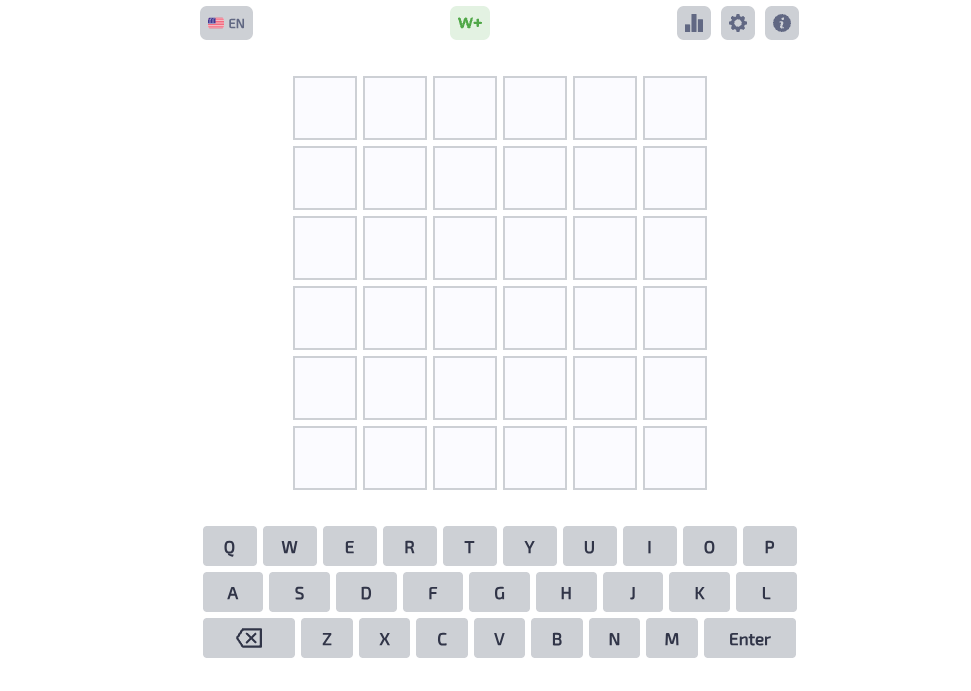Your routine is the experiment
Perform meticulous care tasks under watch, master calm mini-games, and uncover branching evaluations in Human Expenditure Program’s unnervingly clinical browser horror.
Keep exploring
Keep your night shift energy up with more browser horror, tense escape rooms, and quick palate cleansers we trust.

Dodge traps, read twice, and outwit the quiz that cheats back
Dodge traps, read twice, and outwit the quiz that cheats back

Rocket-Packed Kart Battles in Your Browser
Rocket-Packed Kart Battles in Your Browser

Play Wordle 2 Unlimited in Your Browser
Play Wordle 2 Unlimited in Your Browser

Spam your way to steadier wave control
Spam your way to steadier wave control

Team up with a helpful fairy and solve enchanted temple puzzles
Team up with a helpful fairy and solve enchanted temple puzzles

Turn dominoes into a daily deduction ritual
Turn dominoes into a daily deduction ritual

Plant, Mutate, Profit—Then Do It Again
Plant, Mutate, Profit—Then Do It Again

Play Sort the Court! Free in Your Browser
Play Sort the Court! Free in Your Browser

Play Hollow Knight in Your Browser
Play Hollow Knight in Your Browser

Carve an endless winter run and push your best distance
Carve an endless winter run and push your best distance
A monitored routine where small choices echo loudly
Enter a lab where empathy is measured in clicks
Human Expenditure Program places you in the role of a quiet caretaker within a spotless, audit-heavy facility. Instead of jump scares, the tension blooms from procedure: brushing teeth, plating meals, sorting medications, and maintaining order while an unseen panel observes. The UI never shouts, yet every meter, checkbox, and prompt whispers that you are being watched. Human Expenditure Program leans on restraint—sterile rooms, muffled tones, and a ledger that tallies your decisions—so that ordinary acts pick up an ominous weight.
Across short sessions, you guide Harvey through daily upkeep while learning how timing, thoroughness, and demeanor reshape end-of-day assessments. Human Expenditure Program is a psychological loop: repeatable, deceptively simple, and grimly fascinating. New players quickly realize that speed alone is not rewarded; calm accuracy matters, and tiny lapses ripple through the report that follows. Failures are rarely explosive; they are procedural, captured in notes that question your care, your patience, and your priorities.
How play unfolds moment to moment
Each cycle in Human Expenditure Program is a string of micro-activities. A progress card outlines tasks, and the interface nudges you from station to station. A toothbrush visual asks for deliberate strokes without rushing the bar. A skillet requires measured attention so the meal lands warm, balanced, and on time. A pill sorter challenges you to confirm dosage and schedule with quiet certainty. None of these are difficult on the surface, yet Human Expenditure Program overlays pressure with timers that are never quite generous and feedback that is never fully explicit. The system wants to see how you behave under scrutiny.
Between tasks, you scan for subtle tells: a window tint shifting cool to cold, a soft audio sting, a line of text that jitters for half a second. Human Expenditure Program converts interface quirks into narrative whispers, hinting that the observers are displeased. The world never breaks character. The clinical tone persists until the daily review, where your choices are broken down into professional vocabulary that stings more than any jump scare.
Systems that reward empathy and precision
Under the hood, Human Expenditure Program evaluates three intertwined ideas: diligence, empathy, and compliance. Diligence asks whether you gave tasks the time they deserved instead of speed-tapping. Empathy grades whether you noticed comfort cues—temperature, presentation, tone—when caring for Harvey. Compliance checks whether you followed procedure even when it felt unnecessary. Human Expenditure Program never states these axes outright, but the review language reveals them. Over time you’ll parse phrases like “sufficiently attentive” versus “mechanically executed,” and you realize the program is training you as much as it is judging you.
This interplay creates a troubling calculus. There will be moments when the optimal choice for the score feels misaligned with kindness. Human Expenditure Program asks whether you will choose warmth over protocol, or protocol over warmth, and then immortalizes the choice in a tidy paragraph. That report follows you to the next cycle, weighting subsequent screens with the memory of what you did before.
The atmosphere: pastel dread under fluorescent lights
Where many horror games chase darkness, Human Expenditure Program embraces a clinical brightness. Pastel panels reduce visual noise. Fonts are legible, icons are clean, and the soundscape is restrained. This aesthetic works like a trap—it disarms you, then lets anxiety ferment as tiny imperfections creep in. A checkbox misaligns for a beat. A tooltip lingers after you move on. A chime plays one semitone lower than it did an hour ago. Human Expenditure Program thrives on these minute deviations, turning interface hygiene into storytelling.
Routes, endings, and the pull to replay
Because the review screens reweigh upcoming moments, Human Expenditure Program naturally invites replays. Focus on punctuality and your notes sound efficient but cool. Focus on warmth and you risk gentle reprimands about protocol. Split the difference and you may earn a fragile, conditional praise. Human Expenditure Program treats these outcomes like mirrors, reflecting not only your inputs but your temperament. The result is a web of endings that feel less like branching paths and more like recorded attitudes.
Strategic guidance for steady hands
First, slow down. The timers in Human Expenditure Program punish panic more than they punish thoughtfulness. Second, read every instruction twice; some tasks include soft requirements—presentation, temperature, sequence—that are easy to miss if you click on instinct. Third, listen. Audio cues convey approval or disapproval without explicit text, and those tiny stings often precede review language shifts. Fourth, accept that you cannot please every metric in one pass. Human Expenditure Program is designed to expose trade-offs; lean into them and treat each cycle as a new case study.
Why this experience lingers
Human Expenditure Program sticks with you because its horror is administrative. The monster is the file that bears your name. The jump scare is the paragraph that devalues your effort with one clinical adjective. Many games show you terror; Human Expenditure Program shows you yourself, distilled into scores and sentences. It invites reflection on care work, institutional tone, and the uneasy distance between doing good and being judged good. Play long enough and you’ll start measuring your real-world routines with the same imaginary ledger. That is the game’s most unsettling trick.
Tips for your first complete audit
Keep your cursor steady and avoid double-clicking in quick succession. Confirm tooltips before committing. Where a choice exists between presentation and speed, favor presentation on early cycles to learn the thresholds. If Human Expenditure Program hints at discomfort—steam rising too long, a plate cooling on the counter—adjust rather than sprint. Use the debrief as a roadmap, not a verdict; it is data, not destiny, and the next cycle can pivot your trajectory.
Who will appreciate this style of fear
If you enjoy narrative systems where small details bloom into meaning, Human Expenditure Program is built for you. Fans of procedure-driven tension, score-chasing with moral weight, and minimalist world-building will find a precise experience here. If you prefer loud shocks and rapid spectacle, the game may feel understated at first; give it a full day-night loop, and the hum under the wallpaper will become impossible to ignore.
Instant play in your browser
There is nothing to install. Launch the embedded window, complete the onboarding hints, and begin your first cycle. Human Expenditure Program respects your time with short sessions, yet its audit language invites long contemplation. Whether you chase a top-grade evaluation or intentionally push procedures to see what bends, the laboratory awaits your signature on the next form.
In the end, Human Expenditure Program is less about jumps and more about judgments. It transforms caretaking into a mirror, a score, and a story told through paperwork. Return for another shift, re-approach a task with a kinder hand or a stricter eye, and watch how the program writes about you when the lights dim.
Share Your routine is the experiment
Spread the word, invite friends, or bookmark this page to revisit the story whenever you need it.